Brown Hare: The fairy tale is a lie! After all, the hare is not at all cowardly and kind, but a real fighter, cunning, and sometimes even a killer (11 photos)
In all books for children, hares are depicted as cowardly, timid and kind animals. Probably, the authors simply do not want to traumatize the child’s psyche, since real hare hares steal, kill, fight and indulge in carnal pleasures at the first opportunity. 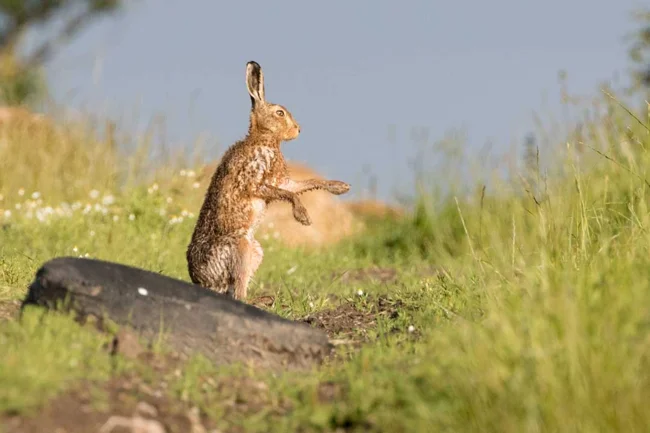
The brown hare is one of the most common and largest representatives of the family. You can distinguish it from all others by its overall carcass of 4-7 kilos and the characteristic reddish-brown color of its coat, which is where the name comes from. It is easier to identify hare in the snow - unlike their hare relatives, our heroes are the same color in winter and summer. 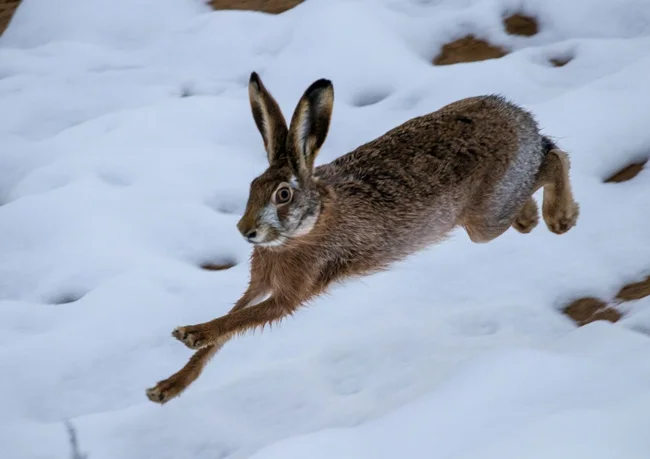
The natural range of the hare is gigantic: it includes most of Europe, Western Asia, as well as almost all of Kazakhstan and western Mongolia. But with the help of humans, the Russians expanded their boundaries even further. Today, wild populations can be found in the Far East and Altai, in New Zealand, on the border of the USA and Canada, in the south of South America. 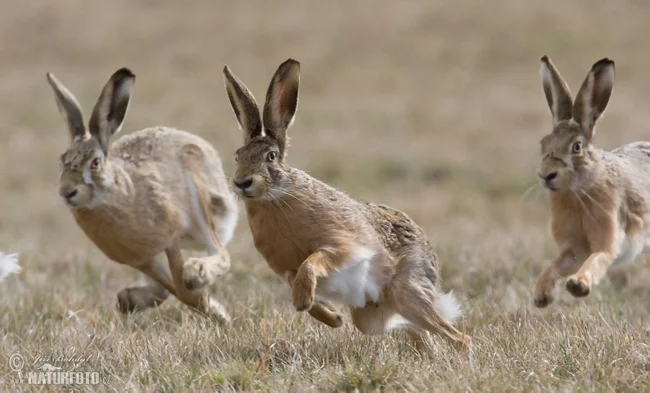
Obliques live alone or in small groups. This is much safer: two eyes are good, but ten are better. Seeing danger, hares transmit an alarm signal to each other by lowering their ears and drumming their hind legs. But such an idyll reigns only during the grass season, when there is enough lush vegetation for everyone. Otherwise, the clearing turns into a battlefield. Dominant males forcefully squeeze out all the sweet spots. Sometimes it even happens that they spend more time defending their feeding area than they eat. 
And all because two large hares can eat more grass than one average sheep. Moreover, they do not eat everything, but choose only those greens that contain a lot of vegetable fats. If we compare the chemical analysis of the stomach contents of hares and most other herbivores, the crude vegetable fat in the gastrointestinal tract of long-eared animals will be 30% higher than the expected norm. 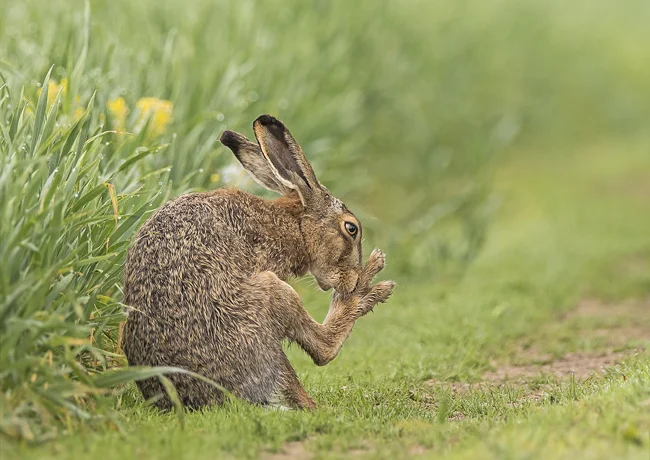
And in winter, when hunger is at its worst, the big-eared one gnaws tree trunks and... corpses. The hare, without a twinge of conscience, empties the hunting snares. This is how herbivores make up for the catastrophic protein deficiency. Here are the bunnies for you! 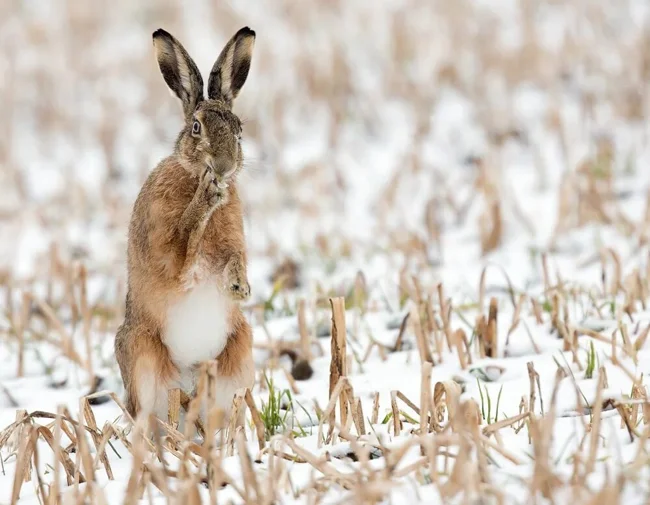
The hare itself is hunted by all and sundry - canines, large cats, birds, and people. But not every predator can win in a fight with a seasoned large scythe. Firstly, hares are very secretive. Until they are found, they pretend to be mossy pebbles until the last moment. He will lie down on the ground with his scythe, press his ears back and freeze - try to find him! 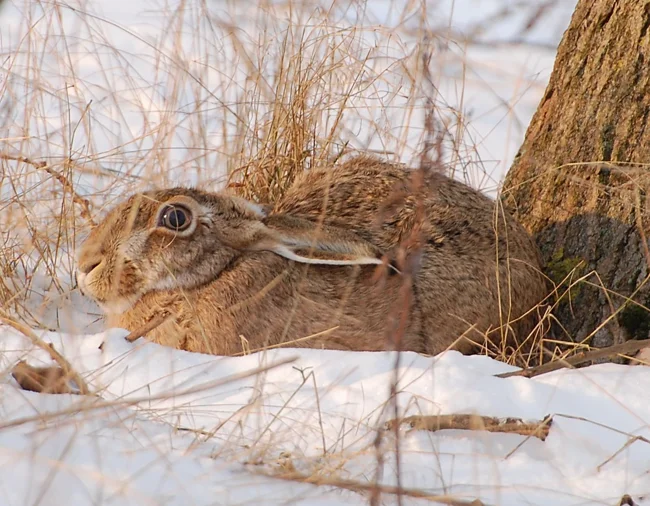
Secondly, if the animal has already been declassified, the hare will go on the run, accelerating up to 60 km/h! That's the speed of a racehorse! Moreover, at such speeds the scythe makes sharp turns and zigzags - try to catch up! 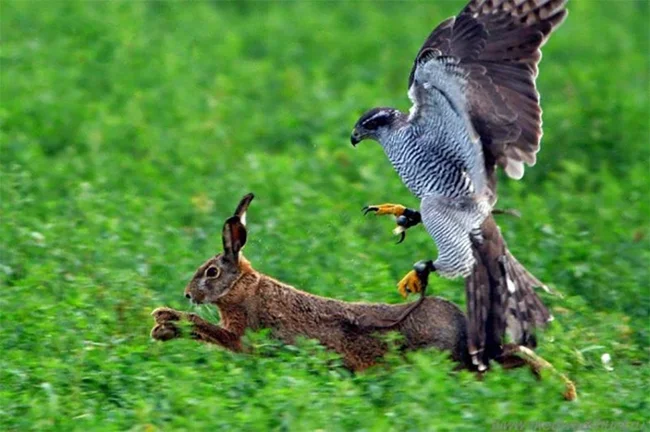
Thirdly, the hare will not give up without a fight. Strong jaws with long incisors, sharp claws on strong paws. But the most important weapon is the rage of a cornered beast. When the scythe is attacked from above, he falls on his back and kicks. One accurate hit is enough to seriously injure or even kill a predator. Well, if the bird has already grabbed onto it, the hare will give in. So much so that the bird literally has one leg here and the other there, in the hare’s skin. If a wolf, fox or other terrestrial predator attacks, the scythe also does not give up: sharp incisors are added to powerful kicks. 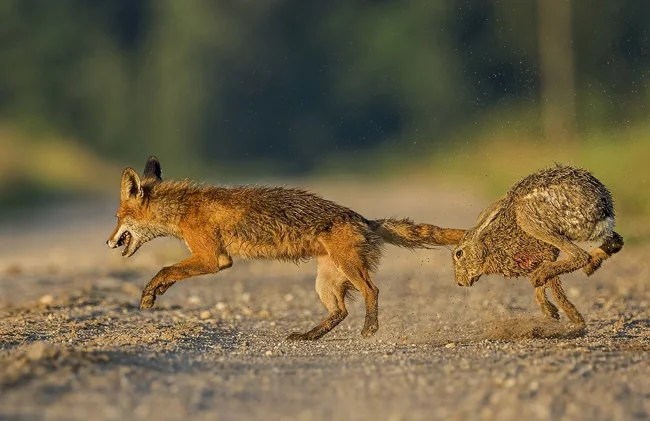
This fox attacked the hare. But, having received a rebuff, she now runs away from him!
Hares don't stand on ceremony with each other either. In the spring, during the rutting season, long-eared animals literally go crazy! In England there is even a saying: “mad as a March hare.” The big-eared ones jump, run, fight and run again! Moreover, most often, it is not males who box with males. These are ladies literally fighting off overly persistent suitors. This is how the young lady shows that she is not in the mood for intimacy. Or, on the contrary, it tests a potential partner’s strength - will he give up? 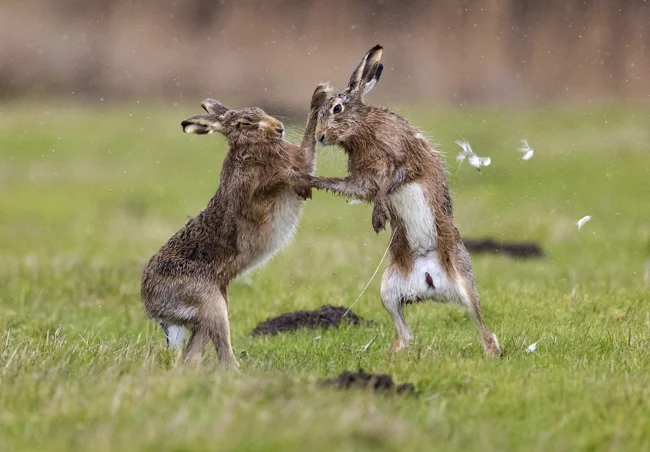
The first brood appears in March-May, after 45 days of pregnancy. After birth, the female visits the hare only once a day: she quickly feeds, licks and moves on. Babysitting for a long time is dangerous, because predators can track the mother and find the entire litter. Within a month, the bunnies become independent, and the mother stops coming completely. Most likely, by this time she has already beaten the next idiot and is preparing for a new litter. 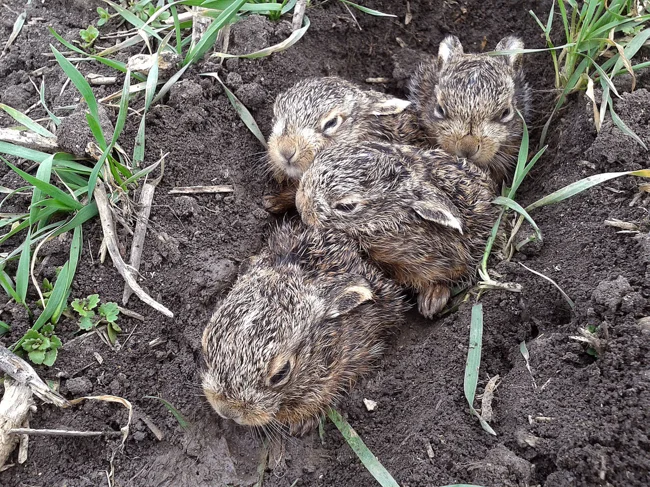
Babies are born almost completely independent: they are covered with fur, can see and hear, and from the 5th day of life they already leave the den - a small hole under a bush.
The fairy tale is a lie, but there is a hint in it, a lesson for good fellows: do not get involved with russians! Even people sometimes find it difficult to cope with these beasts. There have been cases when a “dead” hare in the hands suddenly comes to life and seriously injures the hunter with a sharp blow of its clawed paws. But in the steppe there is no ambulance!
